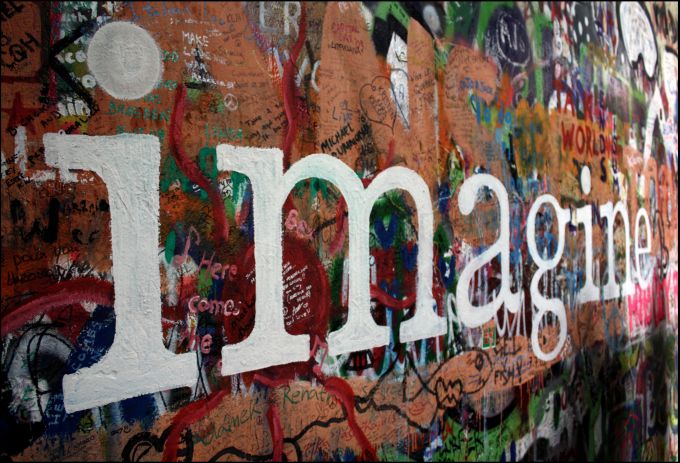Applied Imagination: Theory and Practice (IL005)
I have found the Applied Imagination course to be incredibly valuable. I have not only learnt about imagination and creativity from an academic perspective, but also in the context of many fascinating disciplines other than my own. I greatly enjoyed being able to put what I had learnt into practice; in my [assessments], and even in everyday life. The module is certainly very different to anything I have ever done before, and I hope it has made me a more open-minded, reflective, and (last but very much not least) imaginative thinker.
- Maths and Philosophy student, 2014-15.Description
What is imagination? What different forms can it take? Can we measure it? Assess it? When and how do you use your imagination? Do different disciplines engage and treat imagination differently? Is imagination important in academic studies, the working world, or life? What would it be like to not have an imagination? How could you get others to manifest their imaginative and creative thinking?
This module is designed to enable you to make connections between the 'imaginative' thinking and practice deployed within your own and other disciplines and to autonomously explore and develop your own theory of applied imagination. By engaging in inter- and transdisciplinary learning, the module will:
- Support you in developing a theoretical understanding of imagination and imaginative thinking;
- Explore the relationship between imagination and creativity;
- Enable you to articulate and reflect upon your own imaginative practices and those of others;
- Consider what the role of the imagination is within learning and knowledge;
- Give you the chance to apply what you learn in a practical way and devise the form your assessment will take;
- Invite you to explore how what you have learned might be applied beyond the classroom and university life.
Imagination rules the world! The defect of our modern institutions is that they do not speak to the imagination." Napoleon Bonaparte
StructureThe module will consist of ten two hour sessions, for up to twenty students, from across the University's departments. Each week will be split between a subject-specialist led session and an hour in which the students and module leader will work with the week's set stimulus to develop student ideas. This latter part will embody an interdisciplinary emphasis and use IATL's Open-Space Learning alongside reflection and discussion.
Previous contributors:
- Naomi de la Tour is the module's founder. Naomi devised and developed AI and contributes sessions each year.
- Philip Gaydon: Introduction to Applied Imagination, Moments of Wonder
- Steve Fuller: The Ideological Imagination
- Dave Wood: Mathematics and the Imagination
- Nick Barker: Imagination and Chemistry
- Coull Quartet: Imagination and Music
- Jonathan Heron: 'Fail better': Performing imagination
- Ruth Leary: Tantrums and Talent: Managing Imagination in Creative Teams
- Shama Rahman: Neuroscience, creativity, and music
- Careers and Skills: Reflective practice
- Mary Courtney: Maps and the imagination
- Robbie Foulston: Imaginative spaces
"Imagination does not become great until human beings, given the courage and the strength, use it to create." Maria Montessori
AssessmentSuggestions for an imaginative form of assessment devised by you with the support of the tutor might include a short story, poetry, a play, a short film, a graphic (animated) short story, original music composition, a workshop, and so on. You must demonstrate and communicate the theories and applications of imagination in your piece. If you wish to submit a non-language-based form of assessment, the piece must be accompanied by a reflective piece of written work.
You will be given full tutor support both when planning your imaginative stimulus and devised assessment and when bringing them to fruition. This will include some one-on-one time with a module tutor. The university also has a wealth of technological and creative resources which will be highlighted to you and aid will be given in obtaining and using them.
"To invent, you need a good imagination and a pile of junk." Thomas Edison
Introductory Reading
- Barry, Lynda. 2008. What it is. Montreal. Dawn and Quarterly.
An extract called 'Two Questions' can be found by clicking here.- Hyde, Lewis. 2007. The Gift: How the creative spirit transforms the world. Edinburgh. Canongate.
This can be found in the library or a pdf version can be found by clicking here.- Jackson, et al. 2006. Developing Creativity in Higher Education. Oxon. Routledge.
This can be found in the library and the whole collection is worth a read. However, if you're a Warwick student head over to the readings page to access some scanned chapters.- Lehrer, Jonah. 2012. Imagine: How Creativity Works. New York. Houghton Mifflin Harcourt.
This is no longer in print (for very interesting reasons which we may well discuss) but if you're a Warwick student you can find some extracts on the readings page.- Clark, Roy Peter. 2012. 'Why Jonah Lehrer's Imagine is worth reading, despite the problems'. Poynter. 2012. Click here to go to the article.
'Imagine - Lennon Wall' by Paul Bowman (https://www.flickr.com/photos/bowmanpics/5316260136/)
Imagination is more important than knowledge.
- Albert Einstein
Module convenor
Naomi de la Tour
(Naomi dot de-la-Tour at warwick dot ac dot uk)
When
Term 1 Autumn 2018/19
Wednesdays 10.00-12.00
Wednesdays 12.00-13.00: Optional development and collaboration hour, with tutors available. This is an additional hour and students are strongly encouraged to attend every week if possible.
Where
Humanities Studio
Humanities Building
Assessment
For 15 CATS:
12% imaginative stimulus with annotation (1000 words) OR equivalent (7 minutes - see further information)
44% reflective and critical/analytical journal (3000 words)
44% student-devised assessment (1000-3000 word piece, 15-minute presentation, or equivalent - see further information)
For 12 CATS:
12% imaginative stimulus with annotation (750 words) OR equivalent (6 minutes - see further information)
44% reflective and critical/analytical journal (3000 words)
44% student-devised assessment (1000-3000 word piece, 12-minute presentation, or equivalent - see further information)

